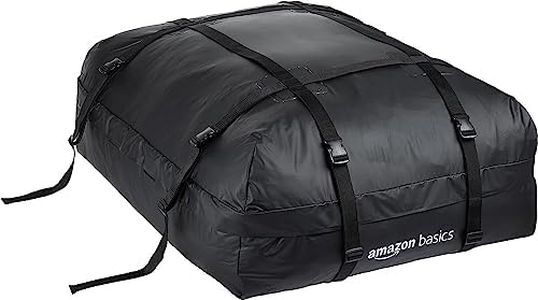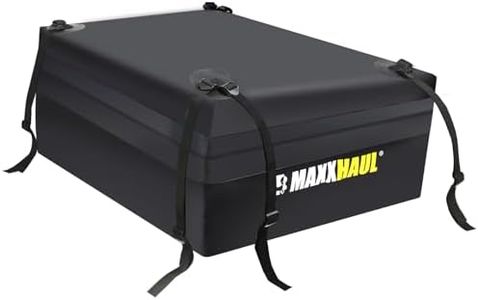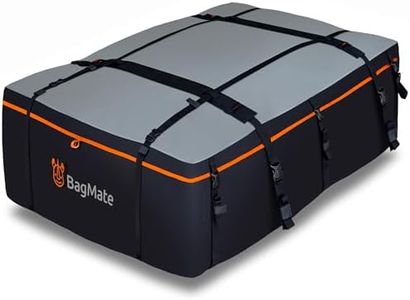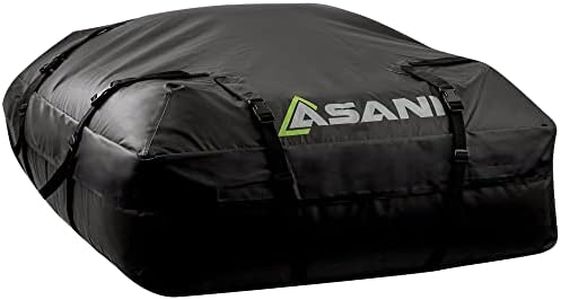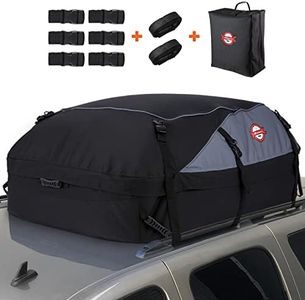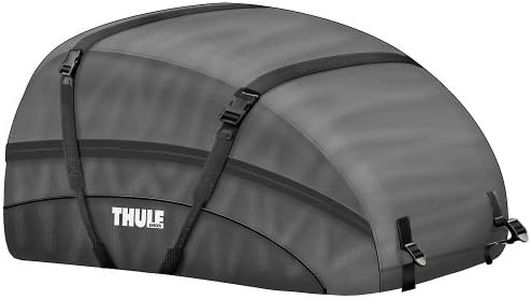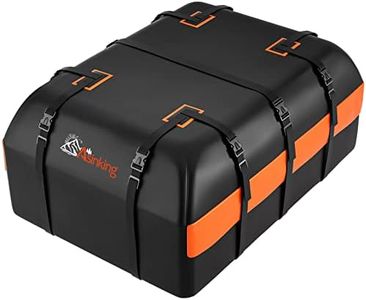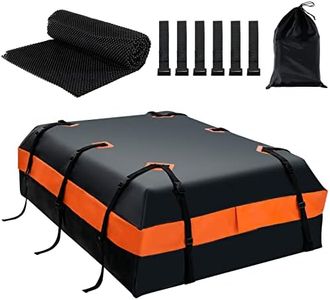We Use CookiesWe use cookies to enhance the security, performance,
functionality and for analytical and promotional activities. By continuing to browse this site you
are agreeing to our privacy policy
10 Best Rooftop Cargo Boxes
From leading brands and best sellers available on the web.Buying Guide for the Best Rooftop Cargo Boxes
When choosing a rooftop cargo box, it's essential to think about how you plan to use it, what you need to transport, and the type of vehicle you drive. Different cargo boxes are designed for various needs, such as carrying camping gear, skis, or luggage, so understanding your own requirements will help you narrow down the options. Compatibility with your car’s roof rack system, ease of access, and security features are also important to consider to ensure a convenient and safe solution for your travels.Capacity (Volume)Capacity, measured in liters or cubic feet, indicates how much the rooftop cargo box can hold. This is crucial because it determines whether all your gear will fit. Small boxes are suitable for a few items or short trips, mid-sized ones handle typical vacation luggage, and large boxes are best for bigger families or transporting bulky items. To choose the right capacity, think about how many people are traveling and what you'll need to store. If you mostly pack light or travel solo, go smaller; larger sizes are helpful for group trips or outdoor equipment.
DimensionsThe physical size of the cargo box, including its length, width, and height, affects what will fit inside and whether it aligns with your car's rooftop, especially alongside other gear like bikes or kayaks. Shorter boxes are ideal for compact cars and won't interfere with the trunk or hatch, while longer boxes are great for carrying skis or snowboards but may be incompatible with smaller vehicles. Measure your gear and your car’s roof space to ensure the dimensions match your needs without blocking access or impacting safety.
Weight LimitThe weight limit specifies the maximum load the box can safely hold, which matters for road safety and vehicle roof integrity. Lower limits work for lighter items like clothing or camping gear, whereas higher limits accommodate heavier goods. Always check both the box’s and your vehicle roof rack’s weight limits, and never load above the lower of the two. Pick a box with a suitable weight limit by estimating the combined weight of your typical cargo.
Opening MechanismThis refers to how the cargo box opens — from one side, both sides, or the rear. Single-side opening is common and fits most basic needs, but dual-side access makes loading and unloading more convenient, especially in tight spaces. Rear opening is useful if you often park closely to other vehicles. Consider how and where you usually park and load your box to decide which opening type suits your routine.
Mounting SystemThe mounting system is how the cargo box attaches to your vehicle’s roof rack. Tool-free systems are easy for frequent removal, while clamp or bolt systems may offer more stability for longer trips. Some systems are compatible with specific roof bars (like aero, square, or round). Before choosing, verify your car’s roof rack style and select a box that matches both in compatibility and your need for either quick removal or secure attachment.
AerodynamicsThe shape and design of the box impact air resistance, noise, and fuel efficiency. More streamlined, aerodynamic boxes produce less wind drag and noise at higher speeds, ideal for frequent highway driving. Bulkier, square-shaped boxes may provide extra space but can increase drag and reduce fuel efficiency. If you drive long distances or care about quietness and fuel savings, opt for a more aerodynamic design.
Security FeaturesSecurity features include locks or reinforced closures to protect your belongings from theft. Basic locks deter casual thieves, while more advanced or multi-point locking systems offer higher security. If you carry valuable gear or park overnight away from home often, prioritize strong security features to keep your belongings safe.
Material and DurabilityThe material, usually ABS plastic or similar polymers, affects how the box resists weather, impacts, and UV damage. Thicker, high-quality plastics last longer and withstand tough conditions but may be heavier. For regular or year-round use, durable materials ensure your investment holds up over time. If your use is occasional and in fair weather, you may not need the highest-grade material.
